In the Mississippi Headwaters region of central Minnesota lies Star Lake Camp, an expansive natural landscape which has introduced hundreds of youth to nature in its nearly 60 years of existence. First established in 1962 by the Minnesota Annual Conference of the United Methodist Church, the camp has served as an extension of the Church’s mission to use nature to instill values in young people and adults alike. Simultaneously, by preserving the natural setting, the camp has helped protect Star Lake which is designated by the DNR as a lake of outstanding biological diversity. It further has provided excellent habitat for numerous “Species in Greatest Conservation Need” including common loon, hornyhead chub, and least darter. Least darter are Minnesota’s smallest vertebrate fish species and are also designated as a Species of Special Concern.
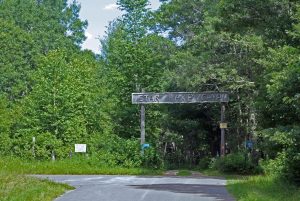 And now, thanks to the generosity of the Minnesota Annual Conference of the United Methodist Church the property will be protected forever with a conservation easement through the Minnesota Land Trust. The conservation easement will ensure the preservation of this one-of-a-kind property so that it can be enjoyed for years to come, while also generating resources for the conference’s camping and retreat ministry. Star Lake Wilderness Camp spans 441 acres and is located in Pequot Lakes.
And now, thanks to the generosity of the Minnesota Annual Conference of the United Methodist Church the property will be protected forever with a conservation easement through the Minnesota Land Trust. The conservation easement will ensure the preservation of this one-of-a-kind property so that it can be enjoyed for years to come, while also generating resources for the conference’s camping and retreat ministry. Star Lake Wilderness Camp spans 441 acres and is located in Pequot Lakes.
A rich history of conservation
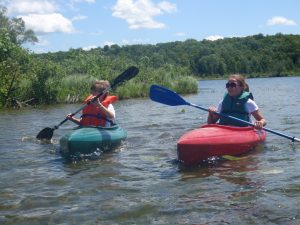 More than just a camp, Star Lake Camp is a reflection of the Minnesota Annual Conference of the United Methodist Church’s commitment to responsible stewardship of God’s creation, affirmed in the Church’s Social Principles, which call for “the preservation of old-growth forests and other irreplaceable natural treasures, as well as preservation of endangered plant species.”
More than just a camp, Star Lake Camp is a reflection of the Minnesota Annual Conference of the United Methodist Church’s commitment to responsible stewardship of God’s creation, affirmed in the Church’s Social Principles, which call for “the preservation of old-growth forests and other irreplaceable natural treasures, as well as preservation of endangered plant species.”
Reflecting those principles, the Church launched an outdoors program to build that connection to nature for their membership.
“Inviting campers of all ages to experience Christ, creation, and community at our United Methodist Camps across Minnesota is at the heart of our mission,” said Keith Shew, director of camp and retreat ministries for the Dakotas-Minnesota Area of The United Methodist Church. “For generations of Minnesotans, time at camp, surrounded by a caring camp community while immersed in beauty and peace of nature, has changed hearts and lives in profound ways. Campers leave knowing that they are part of something truly special. Star Lake Camp has been part of this tradition for many years.”
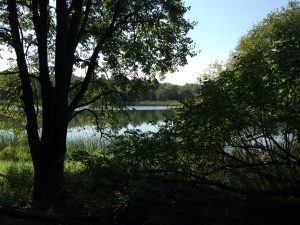 After years of running their programs in state parks and other facilities, it became clear to the Church in 1961 that to offer consistent programming and reach more youth, it was necessary to invest in a permanent facility for the camp.
After years of running their programs in state parks and other facilities, it became clear to the Church in 1961 that to offer consistent programming and reach more youth, it was necessary to invest in a permanent facility for the camp.
After a long search for a suitable location, Star Lake was identified as an ideal property for the new camp; the land was separated into multiple parcels and would need to be reconnected to serve as a camp. The Church began the multi-year—and at times complicated—process of purchasing the various parcels of land that would eventually comprise the 441-acre Star Lake Camp.
An area experiencing changes
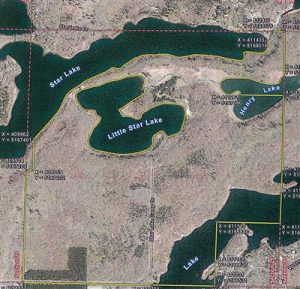 The Camp is in an area that has seen rapidly expanding development in recent years, and as more natural lakeshore is lost, the remaining fish and wildlife are pressured further. Star Lake is a tier 1 tullibee lake, an exceptional home for these little fish that are a rich food source for predators like walleye and a key link in the food chain for many aquatic species, including Loons.
The Camp is in an area that has seen rapidly expanding development in recent years, and as more natural lakeshore is lost, the remaining fish and wildlife are pressured further. Star Lake is a tier 1 tullibee lake, an exceptional home for these little fish that are a rich food source for predators like walleye and a key link in the food chain for many aquatic species, including Loons.
In 2013 the Minnesota Department of Natural Resources (DNR) released a study showing that in order to keep water quality at the levels needed to sustain tullibee, approximately 60% of the land surrounding a lake needs to be protected in its natural state. And now in a time of accelerated climate change, that number could be as high as 75% for some of the lakes.
“We hope this will be a shining example of public and private interests coming together to protect natural resources,” says Marc Bacigalupi, Minnesota Department of Natural Resources Fisheries Area Supervisor, “Where tangible results, like the long term preservation of fish species intolerant to environmental change, can be replicated in other strategic places.”
 As threats to the environment have increased, fortunately so too has the interest from local landowners to protect and preserve the watershed. By working with the Minnesota Land Trust and local partners, individuals and families have begun to protect in perpetuity the lands and waters they cherish, while retaining ownership of their land.
As threats to the environment have increased, fortunately so too has the interest from local landowners to protect and preserve the watershed. By working with the Minnesota Land Trust and local partners, individuals and families have begun to protect in perpetuity the lands and waters they cherish, while retaining ownership of their land.
“In this watershed, we have a very low percentage of protected land, and not much public land,” says Melissa Barrick, District Manager with the Crow Wing Soil and water Conservation District (SWCD). The SWCD played an integral role in connecting the Church with the Minnesota Land Trust and Northern Waters Land Trust to protect this property. “With high private ownership of property, only about 36% percent of our watershed is protected. With this one property alone, that number bumps up to over 38% now.” That brings the SWCD even closer to its goal of protecting 63% of the watershed over time.
In addition to the wildlife habitat and water quality values which benefit the public, the Minnesota Annual Conference of the United Methodist Church sees real benefits for their members from keeping the land in its natural state.
“The development around the area is overwhelming,” says Rev. Bob Hoeft, former director of camping, and current chairperson for the Minnesota Annual Conference trustees’ Star Lake task force. “With some vision however, this can become a very exciting place for ministry and community development—not just for young people, but adults as well. The setting it’s in, the exposure to the outdoors —including ticks and poison ivy!— offers an experience that just doesn’t exist in many places anymore, including here in Crow Wing County.”
Protecting the future
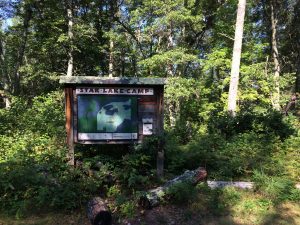 Those pressures of development meant that the Church had a challenging dilemma; sell the property to fund ongoing operations, or find a way to preserve the rich legacy of conservation they had worked so hard to instill in generations of campers? Thankfully, in 2016 the Minnesota Conference’s Board of Trustees elected to pursue a conservation easement. That decision meant that the United Methodist Church would continue to own the property for the camp, receive revenue to maintain the property, and that the land would be protected from future development—forever.
Those pressures of development meant that the Church had a challenging dilemma; sell the property to fund ongoing operations, or find a way to preserve the rich legacy of conservation they had worked so hard to instill in generations of campers? Thankfully, in 2016 the Minnesota Conference’s Board of Trustees elected to pursue a conservation easement. That decision meant that the United Methodist Church would continue to own the property for the camp, receive revenue to maintain the property, and that the land would be protected from future development—forever.
“We had to ask ourselves, how do we steward this property in a way that returned resources to the ministry, but also helped advance our key values and goals?” says Rev. Cindy Gregorson, Director of Connectional Ministries.
With this mission in mind, the Church approached Northern Waters Land Trust, a partner of the Minnesota Land Trust, to discuss their options in protecting the property.
“The vision behind the fisheries habitat protection program is to protect the forest which serves as the sponge that provides the clean and cold water tullibee need to thrive,” says Tim Bremicker, Chairman of the North Waters Land Trust. “Big projects like Star Lake Wilderness Camp and the protection of miles of shoreline truly move the needle on protecting these exceptional lakes for generations to come. The Northern Waters Land Trust is grateful for Star Lake Wilderness Camp’s commitment to protecting this special property.”
Despite a lengthy process, the hard work and dedication of the Church and local partners paid off with a permanent conservation easement through the Minnesota Land Trust, funded by Land Trust members and the State of Minnesota’s Outdoor Heritage Fund.
“Given the size of the property and the outstanding biological diversity, it was important that we accurately documented the current state to create a baseline document for long-term protection,” says Ruurd Schoolderman, program manager with the Minnesota Land Trust who worked on the project. “By protecting these lakes, the Minnesota Annual Conference of the United Methodist Church is doing much more than protecting the camp for the young conservationists of the future. These lakes play a vital role in protecting tullibee fish populations, an important species in our state that relies on cold, deep waters, and undisturbed shoreline to survive. This conservation easement truly is a gift to all Minnesotans.”
“These are sacred spaces where we share our community and get kids outside to experience nature and learn our role in stewarding nature,” said Shew.
Program information
The Minnesota Land Trust works with local landowners and partners to protect the habitat and water quality of the Central Lakes region of Minnesota. Interested landowners can apply for opportunities in their area at www.mnland.org/centrallakes.
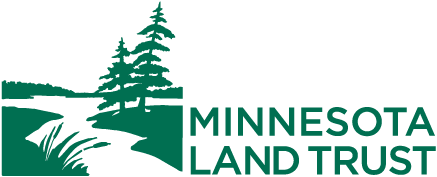
 This permanent conservation easement was made possible by the members of the Minnesota Land Trust, with funding from the Outdoor Heritage Fund, as appropriated by the Minnesota State Legislature and recommended by the Lessard-Sams Outdoor Heritage Council (LSOHC). Thank you to the Northern Waters Land Trust, and most of all to the Minnesota Annual Conference of the United Methodist Church for protecting this unique property forever!
This permanent conservation easement was made possible by the members of the Minnesota Land Trust, with funding from the Outdoor Heritage Fund, as appropriated by the Minnesota State Legislature and recommended by the Lessard-Sams Outdoor Heritage Council (LSOHC). Thank you to the Northern Waters Land Trust, and most of all to the Minnesota Annual Conference of the United Methodist Church for protecting this unique property forever!



